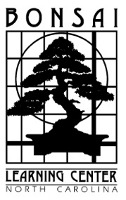What separates good bonsai from bad bonsai and what are the elements which every bonsai artist tries to replicate in their artistic creation? Understanding the goals of bonsai can help. The objective is not to produce miniature copies of ancient forest giants, but to understand the feeling and emotion these great trees evoke in us and then to focus and distill that feeling into a miniature statement about nature.
Trees have certain aspects about them which they only develop as they reach old age. If the bonsai artist is to be successful, he or she must understand what these aspects are and try to emulate them with relatively young plant material in a container. Aspects suggesting great age to the eye of the viewer might include any or all of the following:
1. Dramatic Surface Roots
The Japanese word for surface roots is “nebari.” Ancient trees have heavy sinuous surface roots which radiate uniformly around the trunk and clutch at the ground telling the viewer, “I am here. I have been here for a long time and I am very stable and solid in the earth.” Selecting a bonsai with good surface nebari helps to create the illusion of old age in your bonsai. 
2. Dramatic Trunk Taper
Ancient trees have heavy wide trunks at the bottom which gradually become thinner as you approach the top of the tree. Likewise, bonsai which present the illusion (or the reality) of good trunk taper, also suggest great old age.
3. Downward Sloping Branches
Young trees have branch structures which reach for the light in an upward pointing direction. Ancient trees have branches which bend downward from the heavy weight of their foliage and from the strain of supporting snow during the wintertime. A good bonsai artist understands this and will use wire or other methods to change the direction of branch movement on young plant material.
4. Deadwood
Forest ancients often have section of the trunk or entire branches which have been broken back in storms or by ice and snow. Bonsai artists often create sections of deadwood on their bonsai to enhance the illusion of old age. Such areas are usually referred to with the Japanese terms “jin” (dead branch) and “shari” (dead trunk section).
5. Trunk & Branch Movement
Generally speaking, young trees move in straight lines. With the passing of years, those lines become more asymmetrical and random. Straight line movement in bonsai is usually uninteresting. Trees which display sinuous movement in the trunk and branches suggest great old age to the views eye. It therefore behooves bonsai artists to select plant material and fronts for trees which show interesting movement.
How well you are able to incorporate all of these elements into your final creation will contribute greatly to your skill and talents as a bonsai artist. Remember that the objective is to take an 8 year old tree and by using the skills and techniques you learn in bonsai, make it look like 800. That is the “yardstick” by which your measure as a bonsai artist will be determined.

© 2000 Bonsai Learning Center, All Rights Reserved




